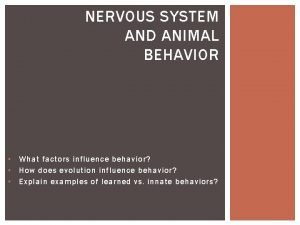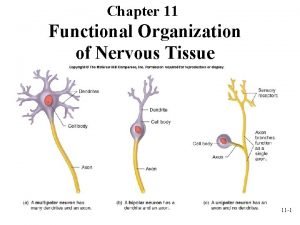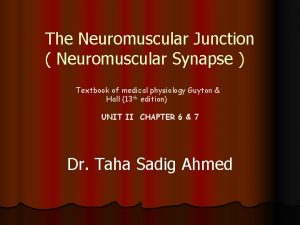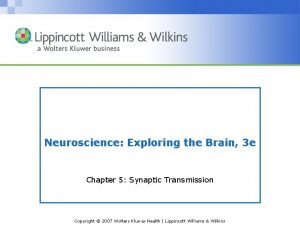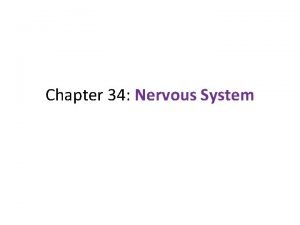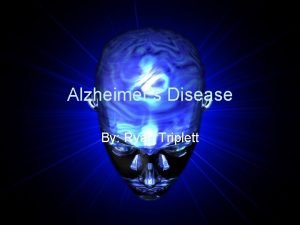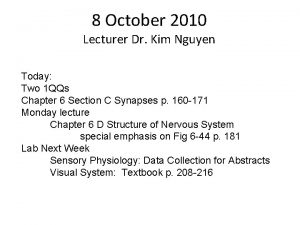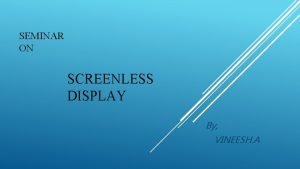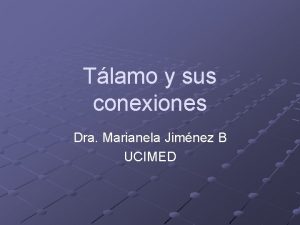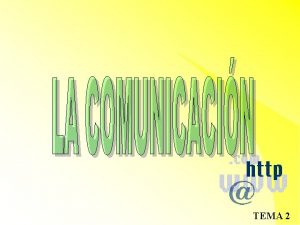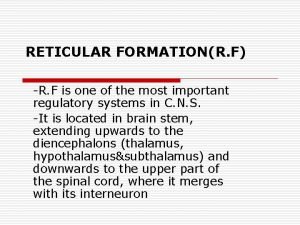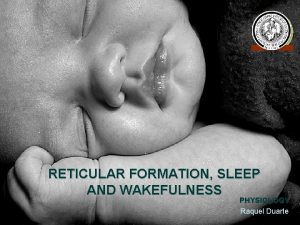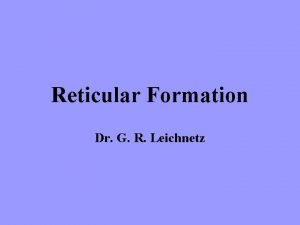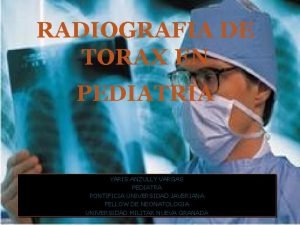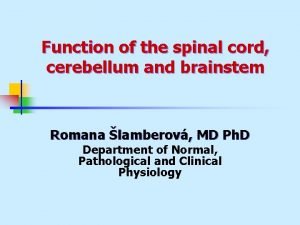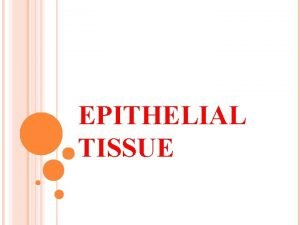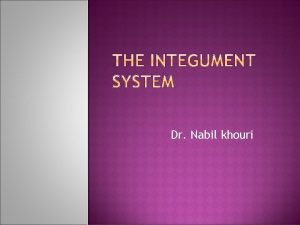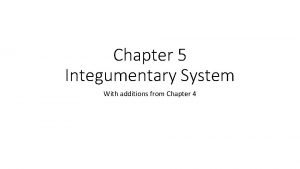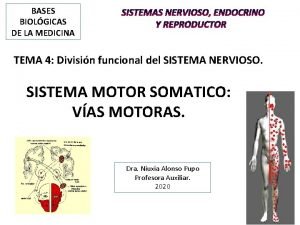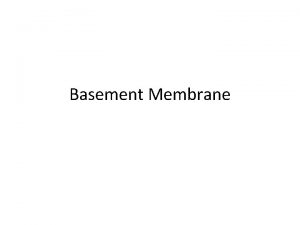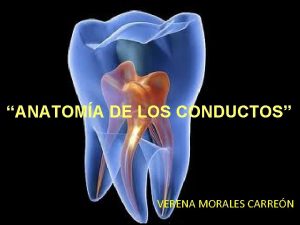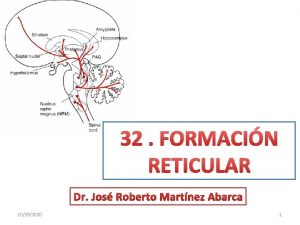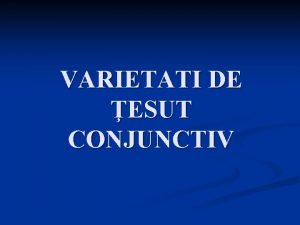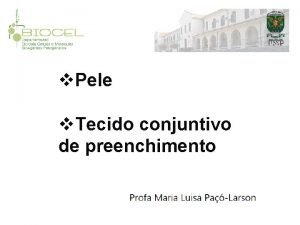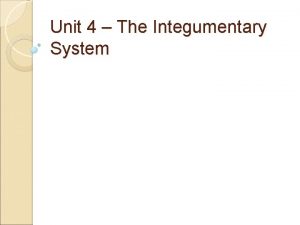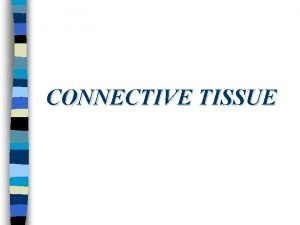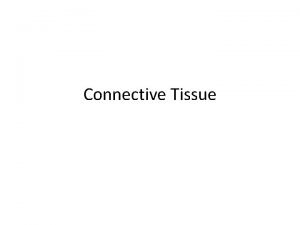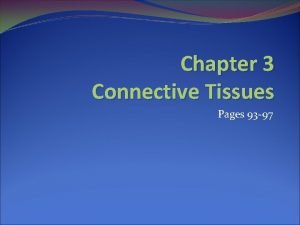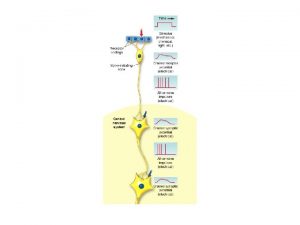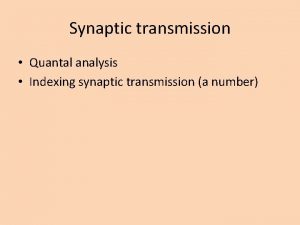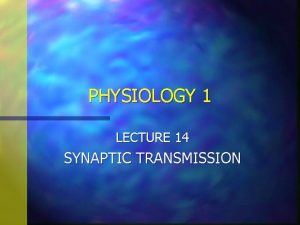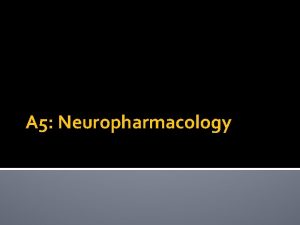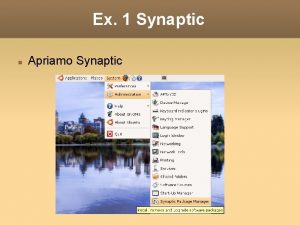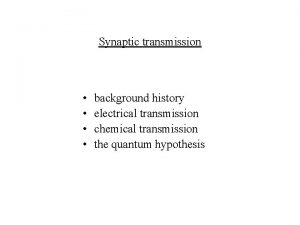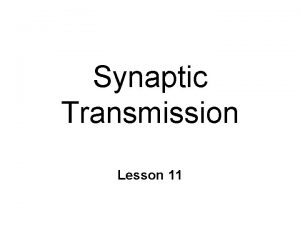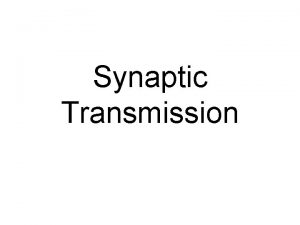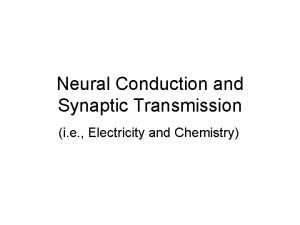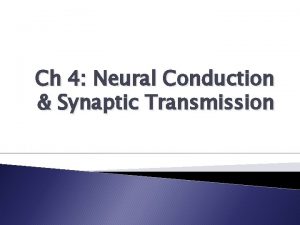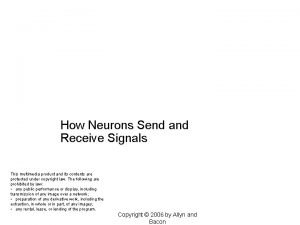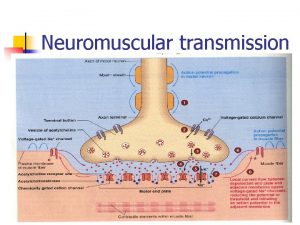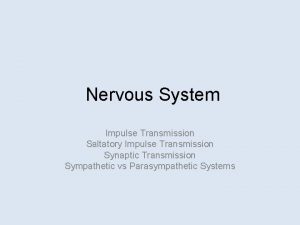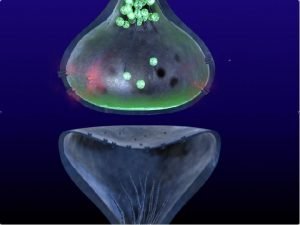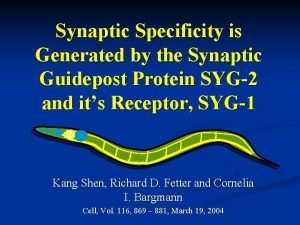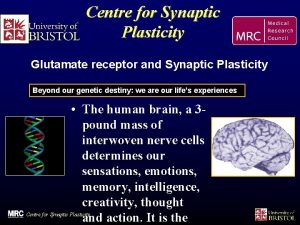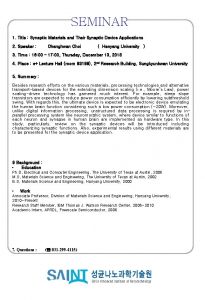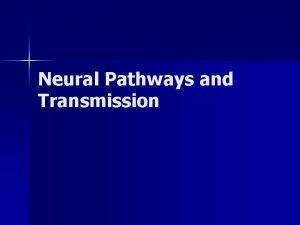Neural transmission The Reticular theory vs the Synaptic


































- Slides: 34

Neural transmission

• The Reticular theory vs the Synaptic theory

The “resting Membrane Potential”

Ions are responsible for the Resting membrane potential

• Hyperpolarization – Moves potential away from zero – (more negative) • Depolarization – Moves the potential toward zero – (less negative)

“Threshold”

What is special about “threshold? ”

The forces of Diffusion

The Neurons membrane separates the different ions

The membrane controls diffusion

By opening or closing Ion channels

If ion channels are open; diffusion across concentration and electrostatic gradients will occur

Threshold Depolarization activates Na+ ion channels…. and then Na+ influx will occur NA+ influx makes the potential more positive…K+ channels then open and K+ efflux occurs…the neuron moves back toward the RMP

Once triggered, the AP is all or none, and “one-way. ”

Action potential arrives at terminals

Causing the release of neurotransmitters into the synapse

The action potential at the terminals causes Neurotransmitter release into the synapse.

NTs bind to post-synaptic receptors

EFFECTS OF NTs? • IPSPs: inhibitory post synaptic potentials – Hyperpolarization – Decrease probability of action potential • EPSPs: excitatory post synaptic potentials – Depolarization – Increase probability of action potential

Ways that receptor activation can lead to IPSPs or EPSPs

Neural Integration: if enough EPSPs occur threshold depolarization will activate Na= ion channels

EFFECTS OF NTs? • EPSP or IPSP – Depends on the type of Neurotransmitter

Know these: Representative NTs Circuit involvement Effects Acetylcholine (Ach) NMJ, Autonomic ganglia Brain +/- Dopamine (DA) VTA, Subst. Nigra accumbens +/- Norepinephrine (NE) RAS, many brain regions +/- Serotonin (5 -HT) Raphe, Ctx, many regions +/- Gama-Amino. Butyric acid (GABA) Ubiquitous - Glutamate (Glu) Ubiquitous + Endorphin Enkephalin (End/Enk) PAG, VTA, +/-

Ex: Why is ACH sometimes excitatory and other times inhibitory? Receptor subtypes Effects depend on receptor subtype

Neurotransmitters bind to receptor sites to produce postsynaptic effects

NT-Receptor Specificity A given NT substance will only activate specific receptor proteins, and can not activate receptors for other NTs l l l Lock & Key Model NT = key Receptor = lock Activation of a receptor will lead to either Excitation or Inhibition.

One Neurotransmitter may activate any of a “family” of receptor subtypes ACH in the ANS can activate the “Muscarinic” ACH receptor (m. ACH), a metabotropic receptor type. Activation of the m. ACHr leads to an inhibitory response. ACH release in the somatic branch of the PNS activates the “Nicotinic” ACH receptor (n. ACHr). An ionotropic receptor type. Activation of the n. ACHr leads to an excitatory response.

NT-receptor interactions must stop! Enzymatic degradation

Nerve gases block ACHE-preventing breakdown of Acetylcholine.

Different nerve gas compounds; all chemically related to Diisoflourphosphate (DFP) common in low concentrations in insecticides and some pesticides.

The effects of nerve gas poisoning reflect normal functions of ACH mostly in the PNS Functional paralysis of muscle activity is a result of poisoning. Death is most often due to anoxia, because you can not respire. Antidotes involve drugs that block the effects of ACH

The effects of other NTs are terminated by Reuptake. E. g. the serotonin transport protein recycles 5 Ht from synapse.

Drugs may affect neural transmission in many different ways

Agonism and Antagonism • Agonism- drug effects that are in the direction of or promote the natural effects of a given NTs at its synapse. • Antatgonism- drug effects that are in the opposing direction of or inhibit the natural effects of a given NTs at its synapse.
 Tapetum lucidum
Tapetum lucidum Function of multipolar neuron
Function of multipolar neuron Thin filament
Thin filament Synaptic gutter
Synaptic gutter Shunting inhibition
Shunting inhibition Synaptic integration
Synaptic integration Synaptic analysis
Synaptic analysis Synaptic integration
Synaptic integration Screenless display seminar documentation download
Screenless display seminar documentation download Synaptic junction
Synaptic junction Capacities newborns display
Capacities newborns display Nucleo paraventricular funcion
Nucleo paraventricular funcion Cadena reticular en comunicacion
Cadena reticular en comunicacion Reticular system
Reticular system Reticular formation and sleep
Reticular formation and sleep Reticular formation
Reticular formation Radiografia espirada
Radiografia espirada Areolar vs reticular connective tissue
Areolar vs reticular connective tissue Function of the medulla oblongata
Function of the medulla oblongata Basal lamina and reticular lamina
Basal lamina and reticular lamina Dermal structure
Dermal structure Adipose tissue
Adipose tissue Merocrine gland
Merocrine gland Rodetes piramidales
Rodetes piramidales Basal membrane
Basal membrane Basal lamina
Basal lamina Rostrum canalium que es
Rostrum canalium que es Activador by roberto
Activador by roberto Tesut conjunctiv dens
Tesut conjunctiv dens Lipideo
Lipideo Deep reticular layer
Deep reticular layer Reticular connective tissue
Reticular connective tissue Hyaline cartilage cells
Hyaline cartilage cells Eccentric nucleus histology
Eccentric nucleus histology Reticular connective tissue
Reticular connective tissue
